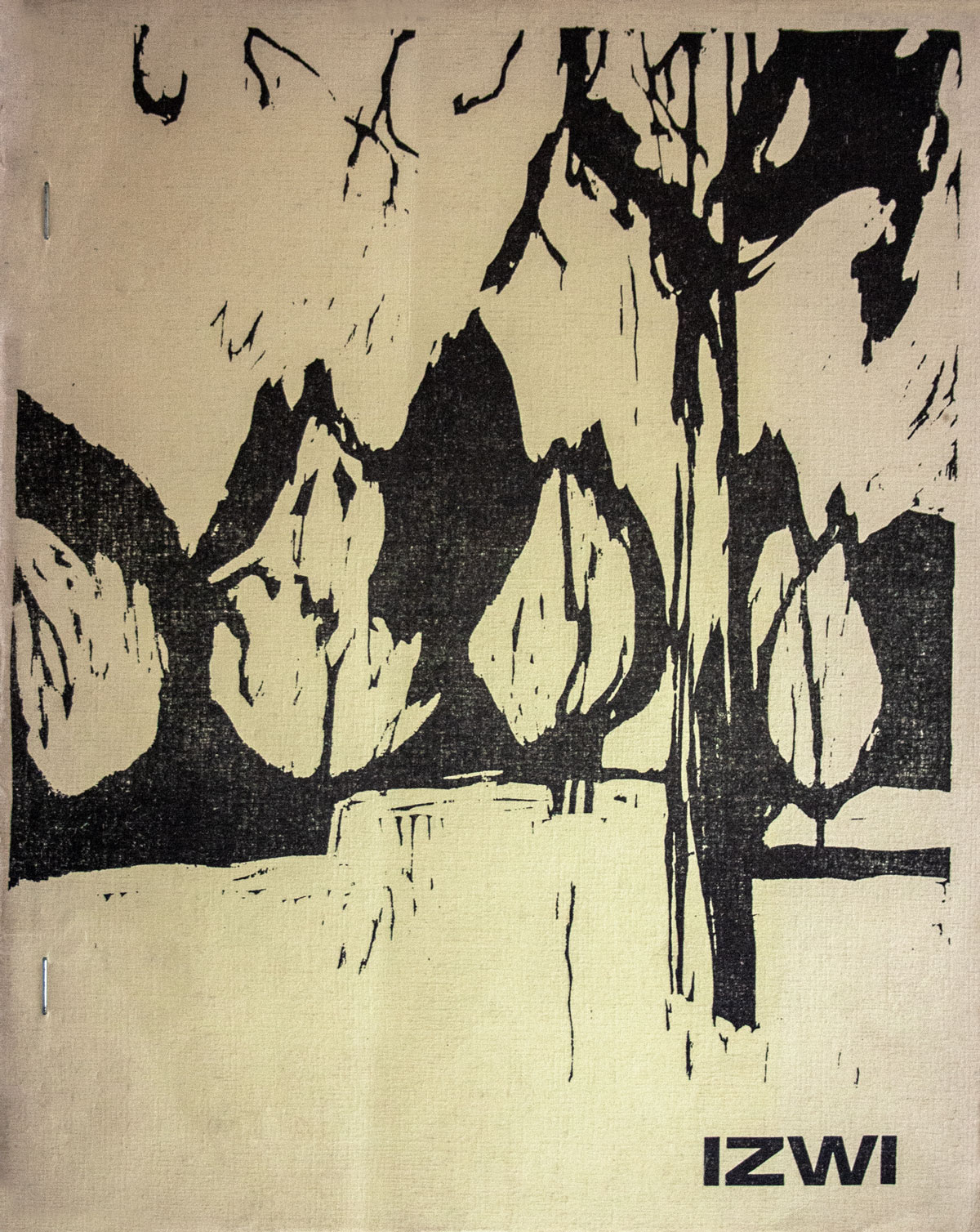Izwi, directly translated as Stem (in Afrikaans) or Voice, was a periodical that filled the vacuum that Wurm magazine had left behind after it ended print in 1970. Phil du Plessis was involved with both Wurm and Izwi, and his editorial vision went against the grain of the literary orthodoxy of the time, especially in the context of Afrikanerdom and Apartheid, providing a refreshing and alternative understanding of Afrikaans literary traditions. Izwi had no influence on the powerful grasp of the Apartheid regime, but it did connect many writers and artists who existed outside the accepted norms of the time, most of whom came from diverse cultural and ethnic backgrounds. Published from a humble base in Crown Mines, Johannesburg, Izwi’s key editors included Du Plessis, Stephen Gray, and Wilma Stockenström. Wessel Pretorius, Sheila Roberts, and Peter Wilhelm (editor of the little-known Heresy magazine) would become contributing editors in later issues. All Izwi’s editors shared Du Plessis’ perspective, many contributing to other like-minded periodicals, such as Ophir, Donga, and Inspan.
Izwi often included work from Wurm alumni, such as Marié Blomerus, Wopko Jensma, and Casper Schmidt to name a few. Izwi is noteworthy for the sheer amount of writers and poets that it published, which amounted to about 150 by the final issue. Included as ‘bonus’ content from inception, Izwi contained original, signed, and editioned artwork. As a result, the magazine has become quite valuable and highly collectible, with certain editions containing important pieces by Walter Battiss, Casper Schmidt, Alexis Preller, Wopko Jensma, Christo Coetzee, Norman Catherine, Peter Clarke, and Cecil Skotnes, to name a few. It was commonplace to include contributors from other literary magazines of the time, such as Stet and Ophir, including Barney Simon, Sheila Fugard, Sheila Roberts, Sinclair Beiles, Welma Odendaal, Njabulo Ndebele, and Mbulelo Mzamane. This proves that there was a good measure of cross-pollination and a free flow of ideas during the 70s amongst avant-garde circles and that a diverse creative counterculture community existed in Apartheid South Africa at the time.
Izwi was a bilingual magazine, but it was mostly comprised of Afrikaans and English literature, with about one-third dedicated to other languages. A generous amount of space was reserved for the translations of poems, bringing to light the succinct cultural shifts in meaning and understanding, related to semantics, tone, semiology, and the like. Alongside translations from an array of European languages into English and Afrikaans, Izwi included some translations from Shona and Owambo and published Portuguese and Zulu poetry translated into English, printed parallel to each other.
Izwi intentionally adopted an inexpensive format in case censorship or political intervention affected the finances of the publication. Normally forty-pages in length, the magazine was hand-crafted and tended to avoid conventional, more ‘tasteful’, literary standards. Izwi opted for younger writers who were hungrier and therefore quite raw and authentic, as opposed to the pretensions of academia and the broader establishment. In all, twenty issues were published between 1971 and 1974, and aside from the numerous literary contributors, around fifty visual artists were showcased throughout the publication’s lifetime.
The right to freedom of expression was defended at all costs, Izwi was regularly under attack from authorities, and du Plessis, alongside co-editors, Gray and Stockenström, were often accused of being involved with anti-Afrikaans factionalism, in support of more subversive forms of tribalism, liberalism, and other more progressive worldviews.


















